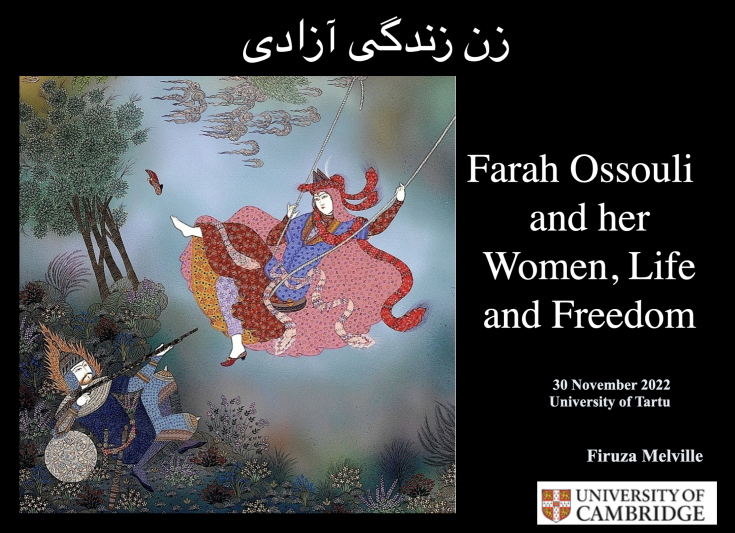Farah Ossouli and her women, life and freedom
“Authority and spirituality in Islam: sources of diversity”, Conference 29-30 November 2022, University of Tartu
This paper focuses on the artwork of one of the most famous contemporary Iranian artists, Farah Ossouli, who is meticulously applying the classical and authentically Persian paradigm of many-centuries of book art to her own ideas and perception of modern Iran and the role of women in society.
It concentrates on her East-West series in which she is masterfully reinterpreting the iconic imagery of artists known both in Iran, like Reza Abbasi and in the West, including Michelangelo, Rafael, Leonardo da Vinci, Botticelli, Goya, Rembrandt, or Fragonard. In her art she offers her own reading, where she is bringing together and juxtaposing East and West, past and present, tradition and modernity, and most of all - the world of women against the world of domineering men, where women’s rights were violated and suppressed. Ossouli's approach is compared with that of a famous Japanese visual artist Yasumasa Morimura who is also known for his reinterpretation of easily recognizable artworks and figures from art history and mass media through his attempts to transcend national, ethnic, gendered, and racial boundaries
Ossouli is turning her ‘miniature’ painting with exceptionally minute details into monumental art of multilayered dimensions and meanings. She combines not only various languages and modes of expression in visual art but brings classical and modern poetic texts to support her ideas - following the tradition of almost 900-year history of illustrated manuscripts.
Her art is extremely timely and brilliantly resonates the current events happening in Iran at the moment.
